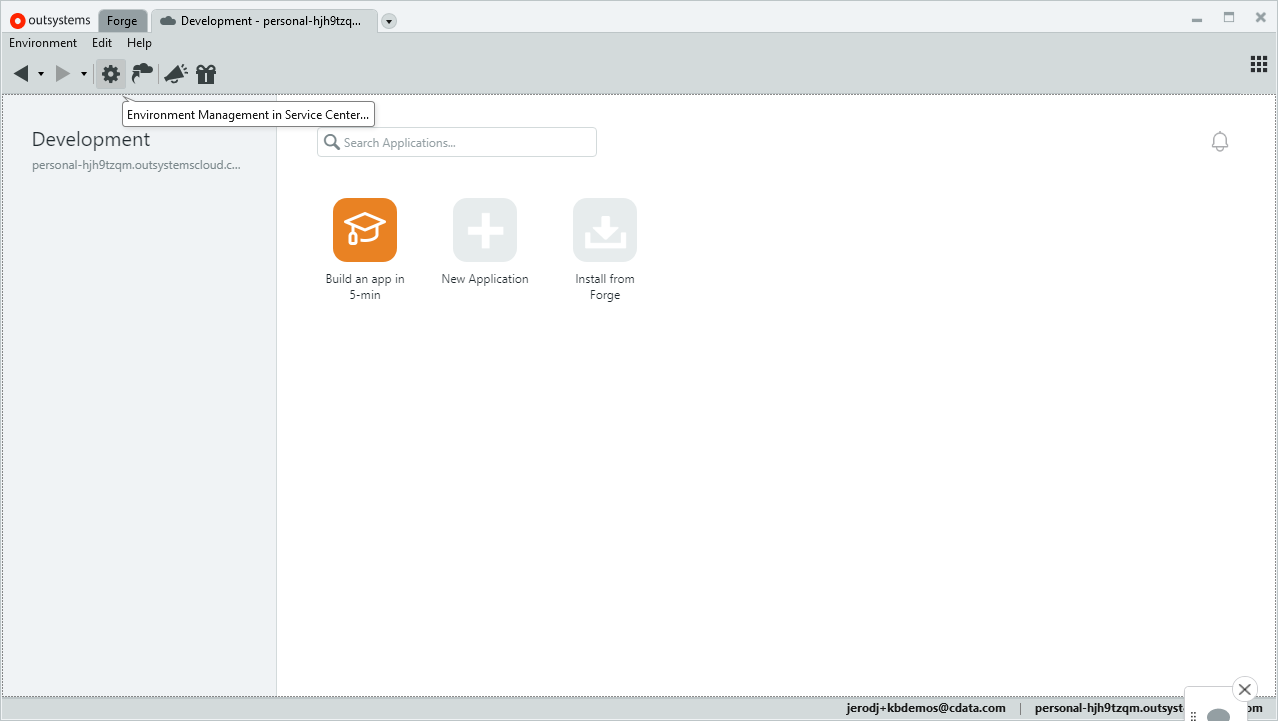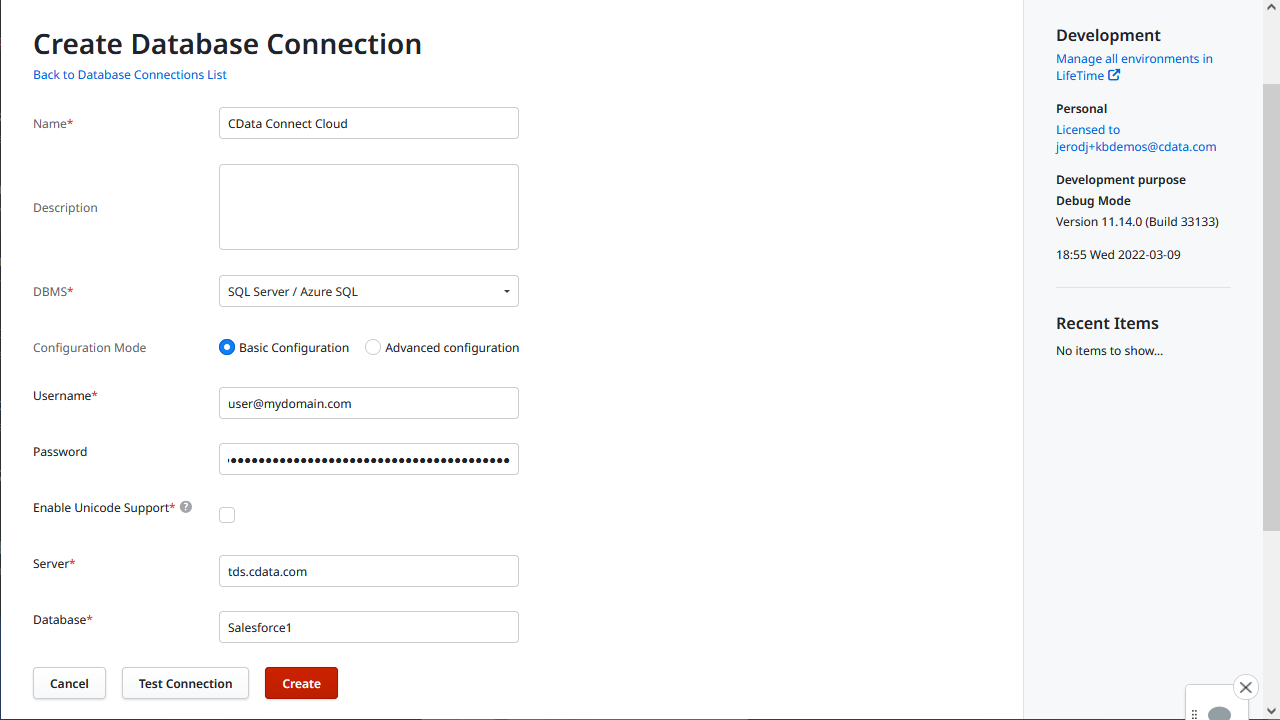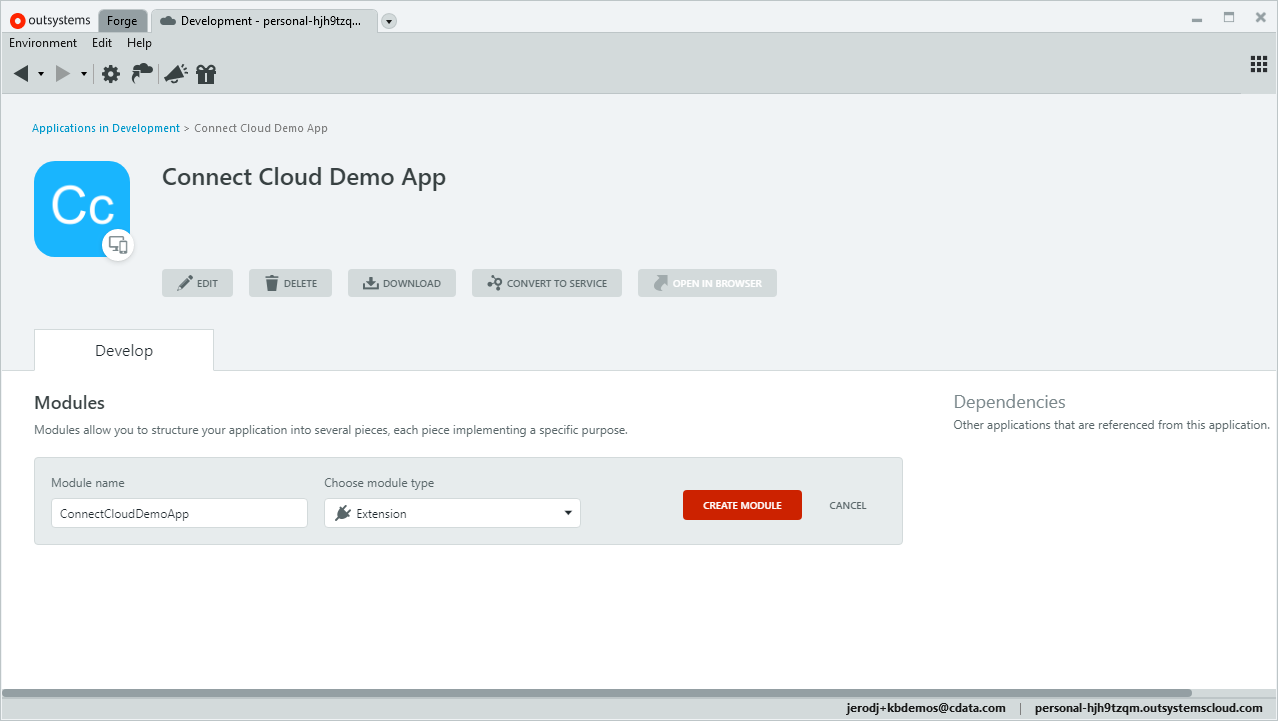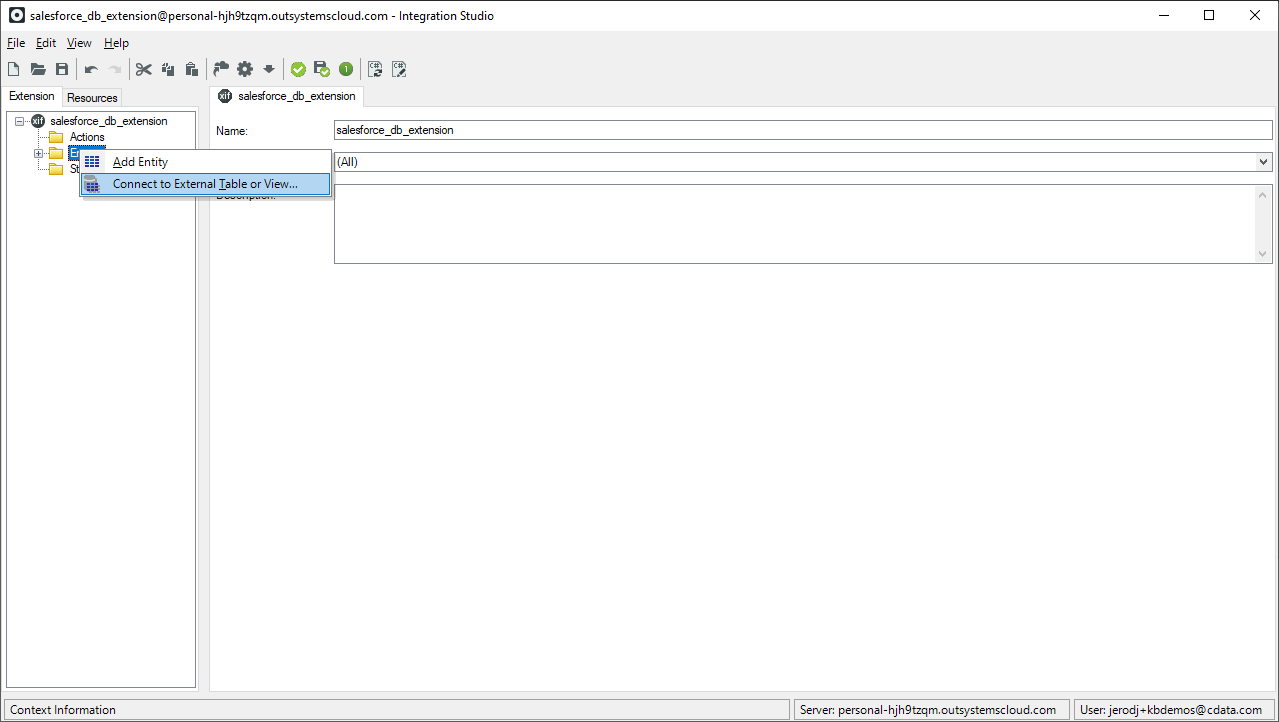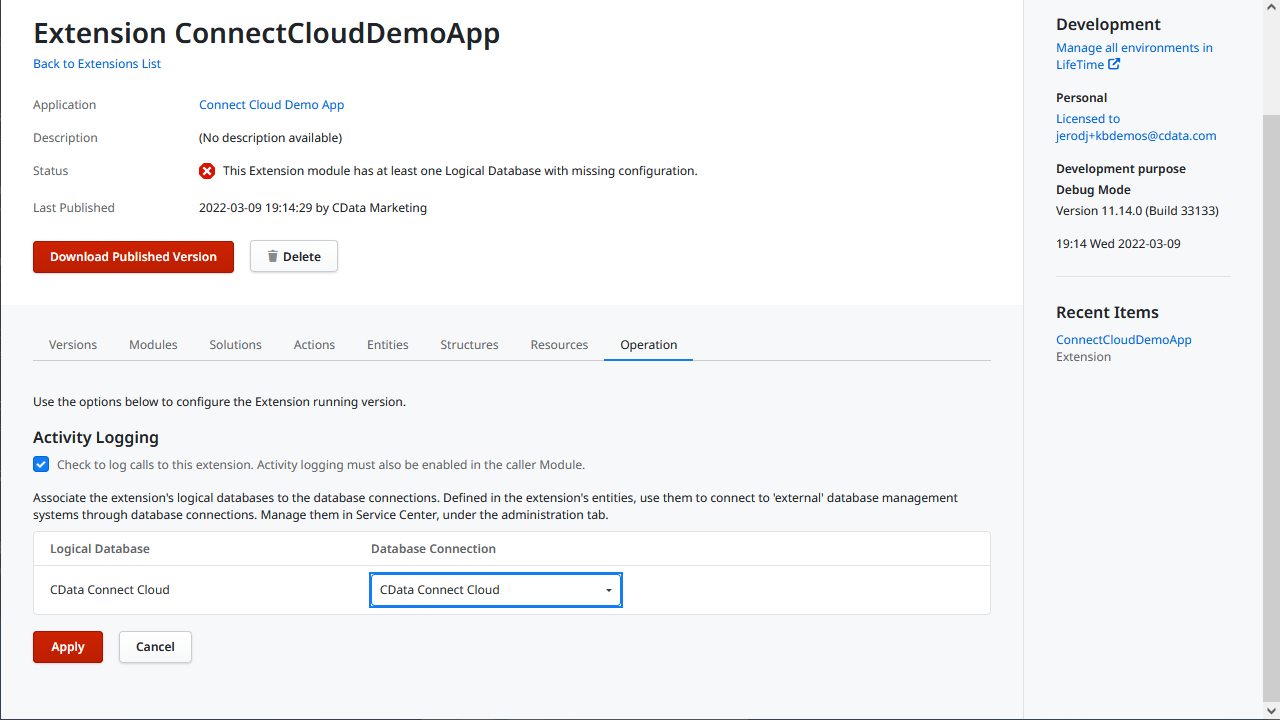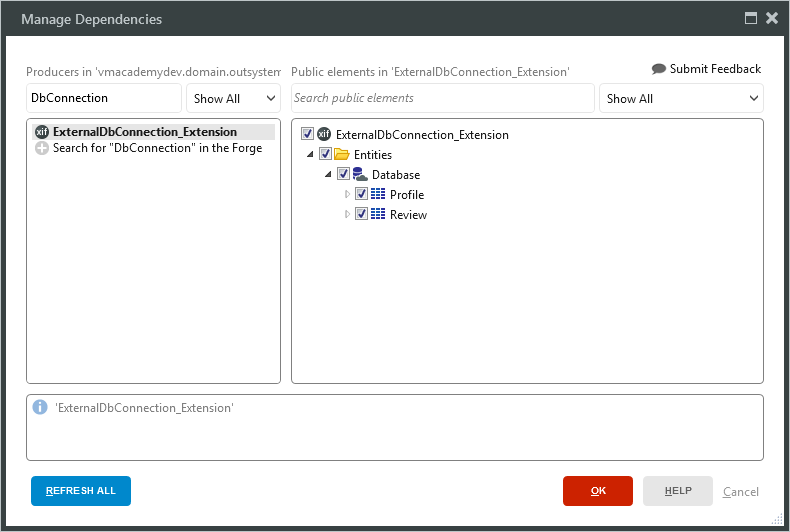Discover how a bimodal integration strategy can address the major data management challenges facing your organization today.
Get the Report →Create Sugar CRM-Connected Enterprise Applications in OutSystems
Use CData Connect Cloud to connect to Sugar CRM Data from OutSystems and build custom enterprise apps using live Sugar CRM data.
OutSystems is a low-code platform which provides the tools for companies to developer, deploy, and manage omnichannel enterprise applications. When paired with CData Connect Cloud, you get instant, cloud-to-cloud access to Sugar CRM data for business applications. This article shows how to create a virtual database for Sugar CRM in Connect Cloud and build a simple app from Sugar CRM data in OutSystems.
The CData Connect Cloud provides a pure cloud-to-cloud interface for Sugar CRM, allowing you to build reports from live Sugar CRM data in OutSystems — without replicating the data to a natively supported database. As you create applications to work with data, OutSystems generates SQL queries to gather data. Using optimized data processing out of the box, CData Connect Cloud pushes all supported SQL operations (filters, JOINs, etc.) directly to Sugar CRM, leveraging server-side processing to quickly return the requested Sugar CRM data.
Configure Sugar CRM Connectivity for OutSystems
Connectivity to Sugar CRM from OutSystems is made possible through CData Connect Cloud. To work with Sugar CRM data from OutSystems, we start by creating and configuring a Sugar CRM connection.
- Log into Connect Cloud, click Connections and click Add Connection
![Adding a Connection]()
- Select "Sugar CRM" from the Add Connection panel
![Selecting a data source]()
-
Enter the necessary authentication properties to connect to Sugar CRM.
The User and Password properties, under the Authentication section, must be set to valid SugarCRM user credentials. This will use the default OAuth token created to allow client logins. OAuthClientId and OAuthClientSecret are required if you do not wish to use the default OAuth token.
You can generate a new OAuth consumer key and consumer secret in Admin -> OAuth Keys. Set the OAuthClientId to the OAuth consumer key. Set the OAuthClientSecret to the consumer secret.
Additionally, specify the URL to the SugarCRM account.
Note that retrieving SugarCRM metadata can be expensive. It is advised that you store the metadata locally as described in the "Caching Metadata" chapter of the help documentation.
![Configuring a connection (Salesforce is shown)]()
- Click Create & Test
- Navigate to the Permissions tab in the Add Sugar CRM Connection page and update the User-based permissions.
![Updating permissions]()
Add a Personal Access Token
If you are connecting from a service, application, platform, or framework that does not support OAuth authentication, you can create a Personal Access Token (PAT) to use for authentication. Best practices would dictate that you create a separate PAT for each service, to maintain granularity of access.
- Click on your username at the top right of the Connect Cloud app and click User Profile.
- On the User Profile page, scroll down to the Personal Access Tokens section and click Create PAT.
- Give your PAT a name and click Create.
![Creating a new PAT]()
- The personal access token is only visible at creation, so be sure to copy it and store it securely for future use.
With the connection configured, you are ready to connect to Sugar CRM data from OutSystems.
Connect to Sugar CRM from OutSystems
The steps below outline connecting to CData Connect Cloud from OutSystems to create a new Sugar CRM database connection.
- Open OutSystems Service Studio
- Click the gear icon to open Environment Management in the Service Center
![Opening the Service Center]()
- Click Administration and select "Database Connections"
- Click "New Database Connection"
- Configure the database connection:
- Name: name the connection (e.g. CData Connect Cloud Sugar CRM)
- DBMS: SQL Server / Azure SQL
- Username: a Connect Cloud user (e.g. user@mydomain.com)
- Password: the PAT for the Connect Cloud user
- Server: tds.cdata.com,14333
- Schema: the name of your Sugar CRM connection (e.g. SugarCRM1)
![Connecting to the Connect Cloud]()
- Click "Test Connection"
- Click "Create"
Map Sugar CRM Tables or Views to Entities in an Extension Module
Once you create the database connection for Sugar CRM, you can create an extension that maps the tables or views to OutSystems entities. If you have not already done so, create an Application in Service Studio.
- Open the Service Studio and open the existing Application
- Click "Add Module," set the "Module Name" (e.g. sugarcrm_db_extension), set "Module Type" to "Extension," and click "Create Module"
![Creating a new extension module]()
- In Integration Studio, connect to your environment
- Right-click "Entities" in the extension tree and select "Connect to External Table or View..."
![Connecting to external tables or views]()
- Follow the steps in the wizard, selecting the tables and views you wish to work with
- In the Integration Studio, click "1-Click Publish"
- In the "1-Click Publish" wizard, click "Configure" when the process completes
- In the Service Center, associate the logical database name of the extension to the database connection that the extension will use and click "Apply"
![Configuring the external extension]()
- In the Service Center, associate the logical database name of the extension to the database connection that the extension will use and click "Apply"
- In your application, click "Manage Dependencies..."
- Add a dependency to the Extension and select the Entities that you will use in your application
![Adding a dependency to the extension]()
At this point, you can access and work with Sugar CRM data just like you would with the standard OutSystems entities.
More Information & Free Trial
With Connect Cloud and OutSystems, you can easily build Sugar CRM-connected applications. Request a free trial of Connect Cloud and start working with Sugar CRM data in OutSystems today.











